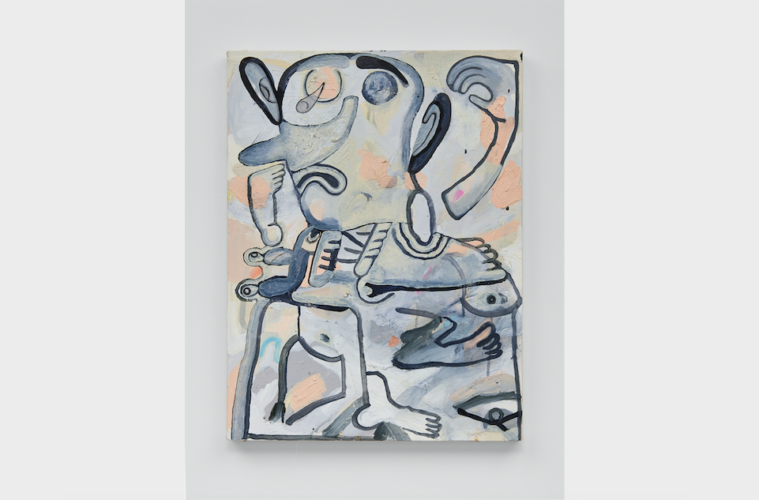Devendra Banhart’s strange and wonderful exhibition of recent paintings and drawings at Nicodim Gallery in downtown Los Angeles is a rogue’s gallery of surrealist avatars, a pageant of intimately scaled works awash in playful, mischievous mystery. From deceptively simple line drawings with an eccentric, Exquisite Corpse style to richly textured, penumbric paintings in which spirits emerge from the colorful ether, Banhart’s visual practice is both analogous to the freak folk energy of his music and at the same time comes from another universe entirely. As Banhart tells the Weekly, “the root of it all is poetry.”
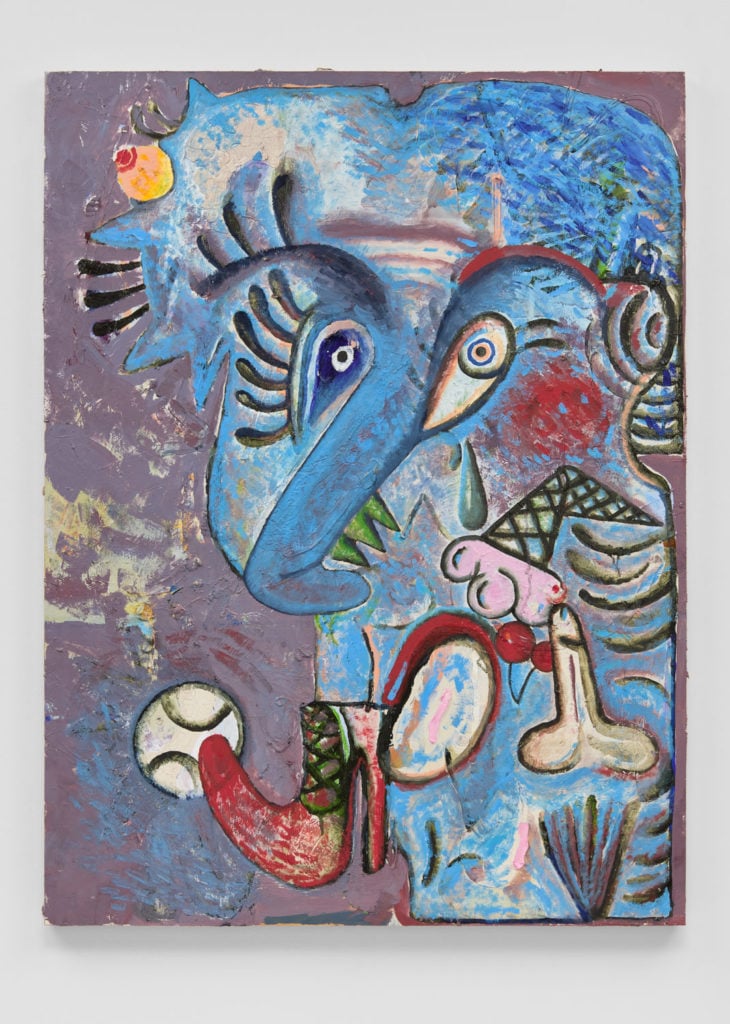
Devendra Banhart, Barbarous Nomenclature, 2020 (Courtesy of Nicodim Gallery)
The Grief I Have Caused You is Banhart’s first solo show in Los Angeles — but not necessarily for lack of trying. He attended San Francisco Art Institute, he’s done the cover art for all his albums; SFMOMA produced an exhibition pairing him with Bauhaus visionary Paul Klee, and he participated in the Getty Pacific Standard Time initiative. Prestel did a book of his work. But when it came to the fine art gallery world, he found it rather less welcoming.
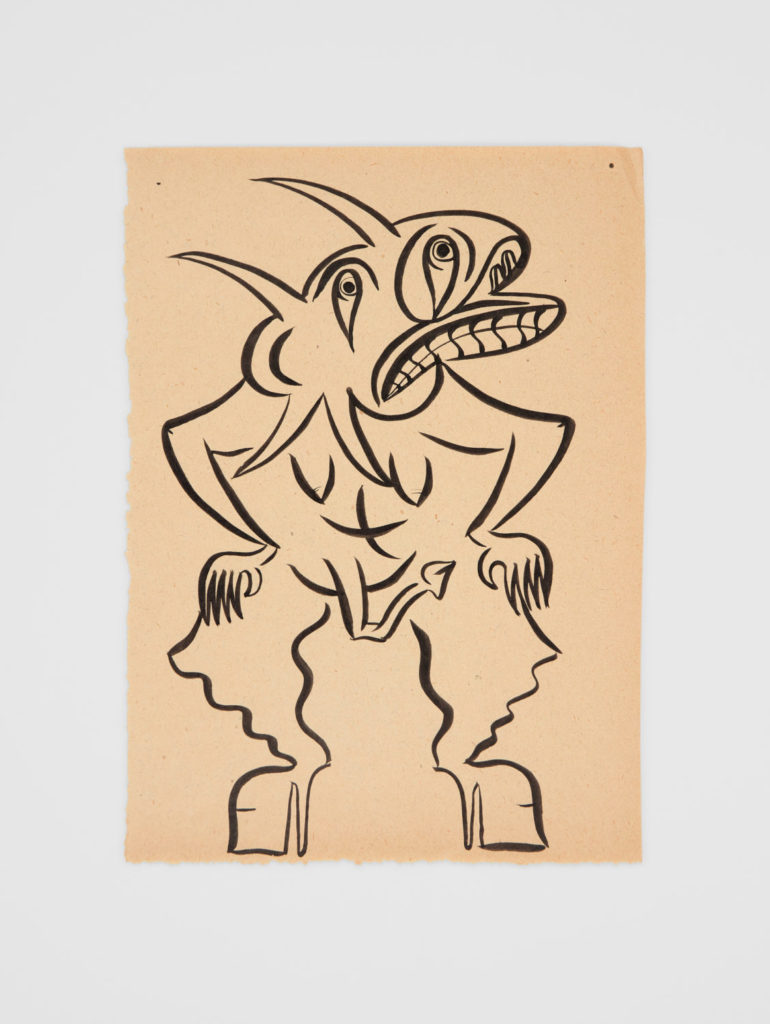
Devendra Banhart, Merciful Demon Dancer, 2020 (Courtesy of Nicodim Gallery)
“About ten years ago I really tried,” Banhart says. “In both L.A. and New York, I had literal doors shut in my face. It was a series of ego blows — is the work that bad? Is there a stigma about being just another musician with an art hobby?” No one cared that he’d long taken it seriously as a parallel discipline. The truth is, from painter and one-man-band Lynn Foulkes, to land artist Walter De Maria as the first drummer of the Velvet Underground, Mark Mothersbaugh, Graham Nash, Stewart Copeland, Kim Gordon, and all or most of the Talking Heads, there’s plenty of deeply interesting art made by people better known for their records.
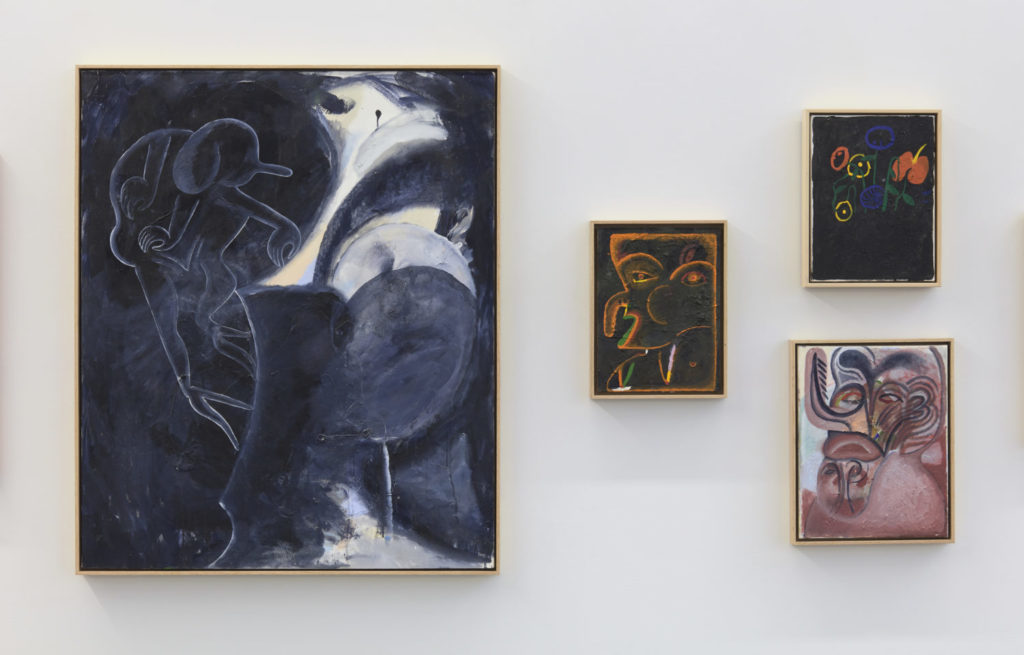
Devendra Banhart, installation view at Nicodim Gallery
Primal in a way that both does and does not make sense, like dreams, Banhart’s visual style has developed over decades of exposure and an affinity to artists who have pushed against the boundaries of consciousness, spirit, and transcendence. He counts Leonora Carrington, John Cage, Meredith Monk, Laurie Anderson, Rufino Tamayo, and Louie Bourgeois among his influences. “Eva Hesse feels like a mother to me,” he says, “and Agnes Martin, I wanted to be her, to be celibate and wear a quilted coat!” Isabelle Albuquerque (a dancer who became a sculptor and also shows at Nicodim) was his first friend in America, and her mother (the legendary artist Lita Albuquerque) became like a second mother, his “art mother.”
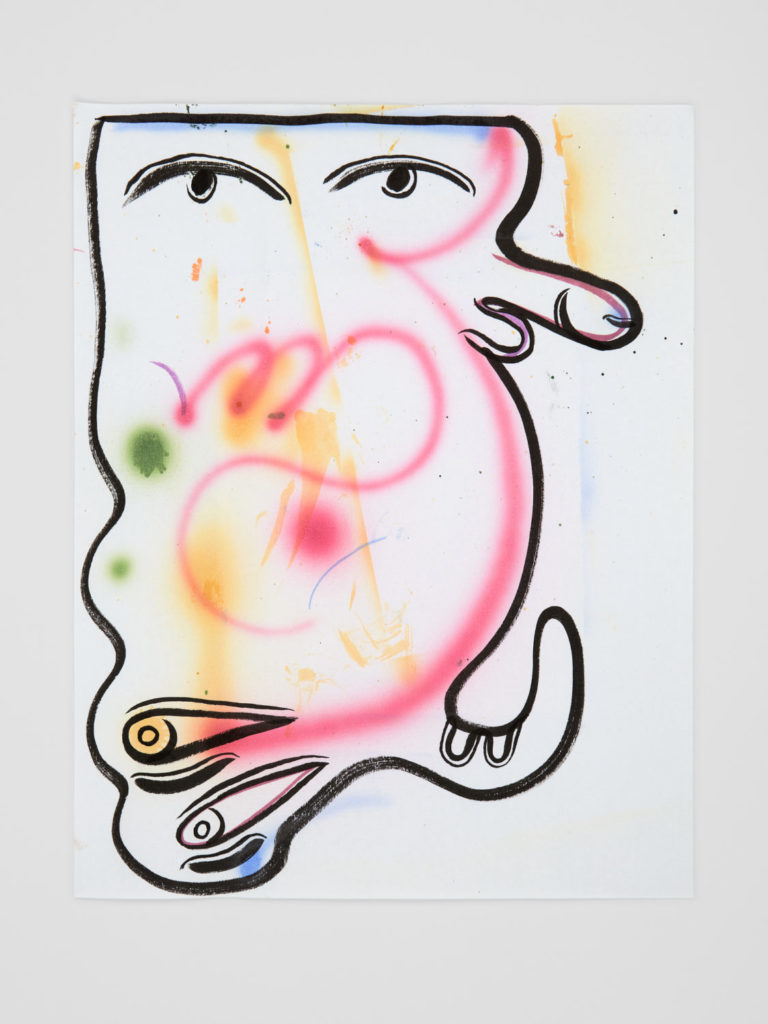
Devendra Banhart, Tubby Dufton Eats Disco Cakes, 2019 (Courtesy of Nicodim Gallery)
But more than that, the work also grows directly out of his spiritual explorations. From the Paris conjuring salons of Madame Blavatsky, to automatic writing and other surrealist parlor games and Carl Jung’s Red Book, Banhart is following a lineage of artists who deliberately operated at the active edge of imagination and the collective subconscious. The work also explicitly references Tantric art, specifically Vajrayana Buddhism and a mediation in which you visualize yourself — your head, your body, flesh and skull. You see your skull as a cup, disambiguate your body, and fill your open skull with the body parts before offering it to the deities.
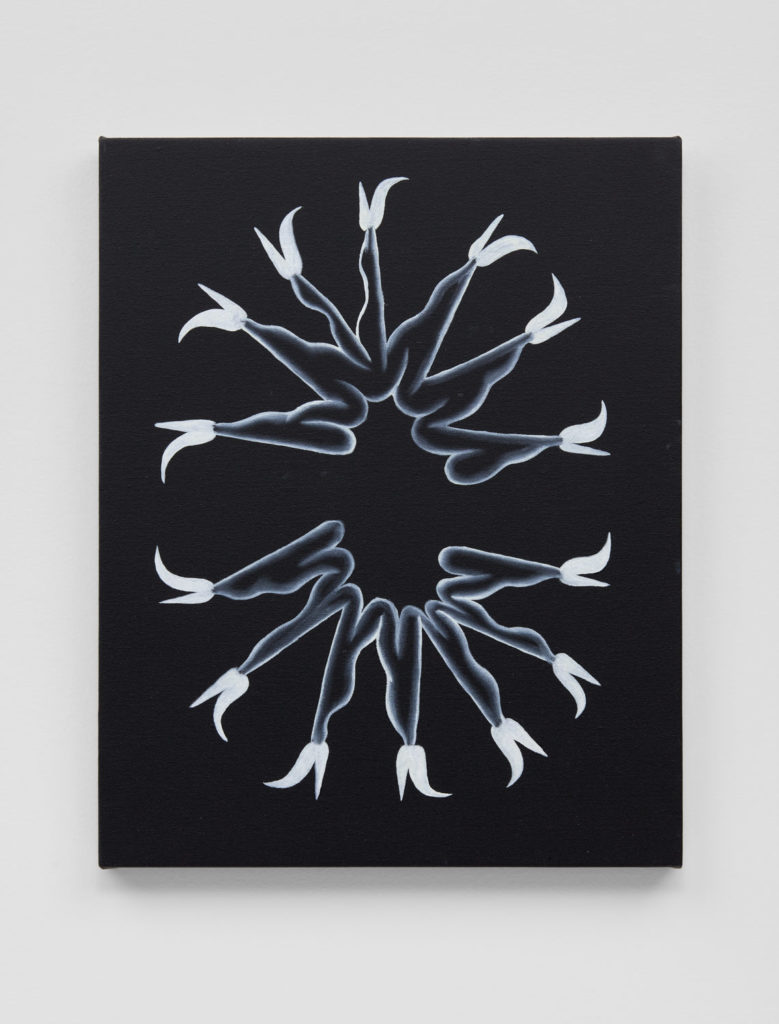
Devendra Banhart, The Fullness of Time, 2021 (Courtesy of Nicodim Gallery)
In the paintings and drawings, it’s just this sort of reconfigured anatomies, fantastical sprites, ancient animal gods and even older life forces — and in some cases, the very primordial cloud from which such beings are formed — which greet, frighten and beckon to the viewer. As he channels single forms, or endlessly works thick pigment until the grotesquerie resolves itself, Banhart is not so much creating as discovering each piece. This is part of what gives his cohort of impossible beings their individuality. The artist and the works are co-creators of one another in the studio and the electricity of that invention radiates from each canvas and page.
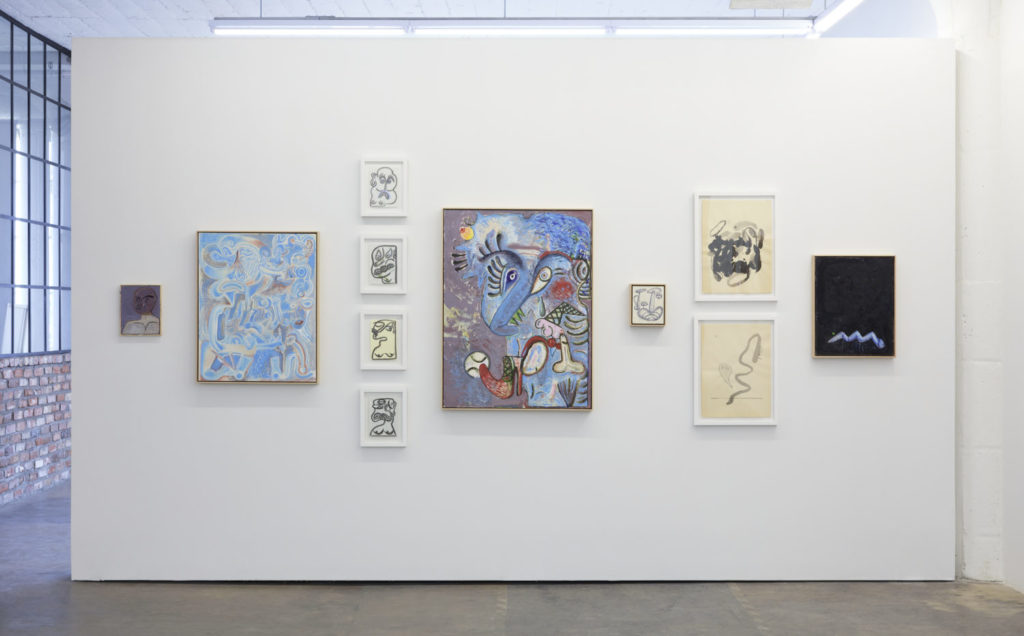
Devendra Banhart, installation view at Nicodim Gallery
With a liminal palette and hypnagogic companions, The Grief I Have Caused You is an eerie and enchanting open-ended meditation on forgiveness and acceptance — of and by yourself, and of and by others. Like everyone, Banhart admits he “can get wrapped up in the suffering others have caused me (presidents, police, partners). But I have caused grief too, and in this time of lockdown the distractions are so few, I could only hide for so long, I had to look at that. I don’t have control over who forgives me,” he continues. “But I do have control over whom I forgive. It’s so dramatic and serious that it’s funny, the agony and the ecstasy.” And that’s the energy of the paintings — the magnified uncertainty of this time of global physical separation and intense karmic connection, given form, and giving permission to be whatever version of ourselves we need to be in order to exist in it.
The Grief I Have Caused You is on view by appointment at Nicodim Gallery, 1700 S. Santa Fe, downtown L.A., through March 20; nicodimgallery.com.
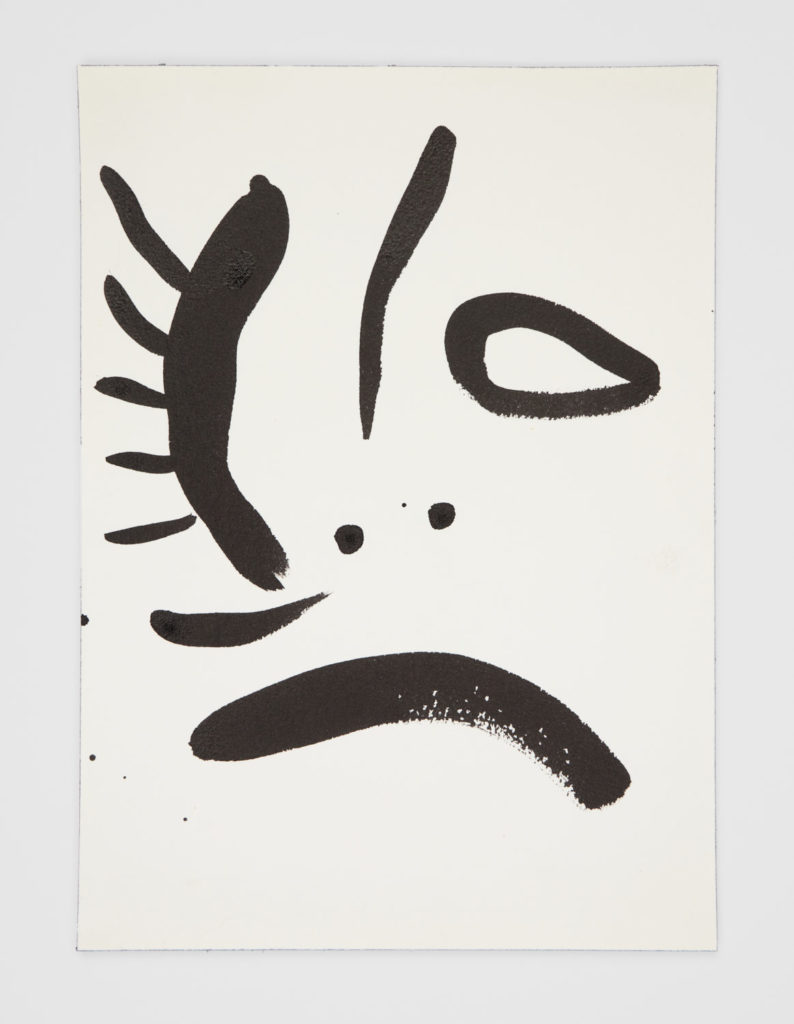
Devendra Banhart, Vanishing Wave Face, 2018 (Courtesy of Nicodim Gallery)
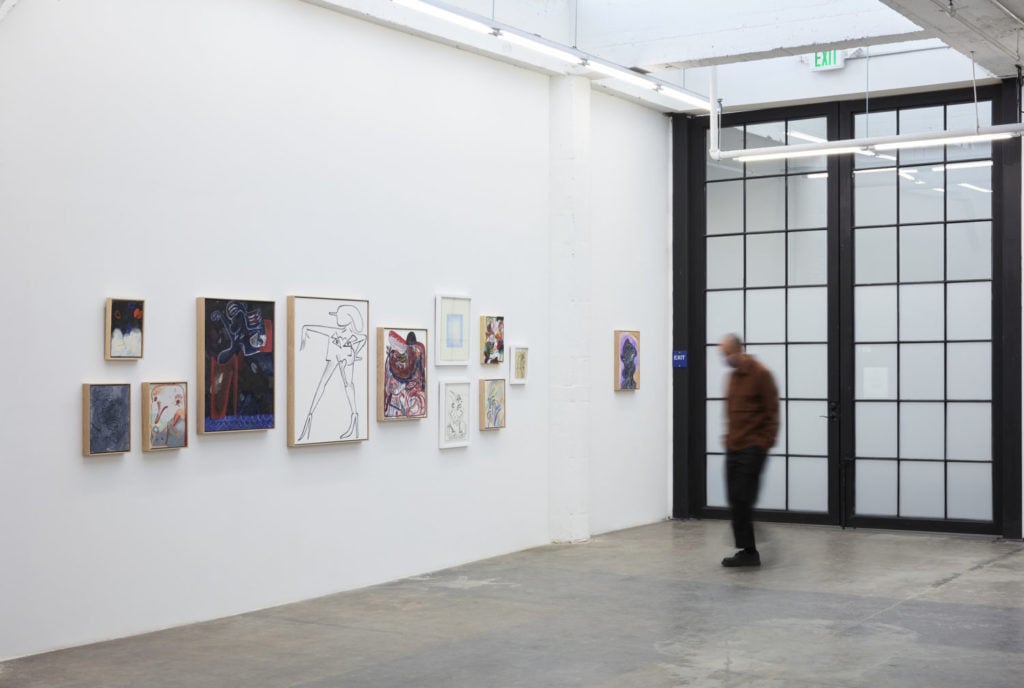
Devendra Banhart, installation view at Nicodim Gallery
Advertising disclosure: We may receive compensation for some of the links in our stories. Thank you for supporting LA Weekly and our advertisers.

